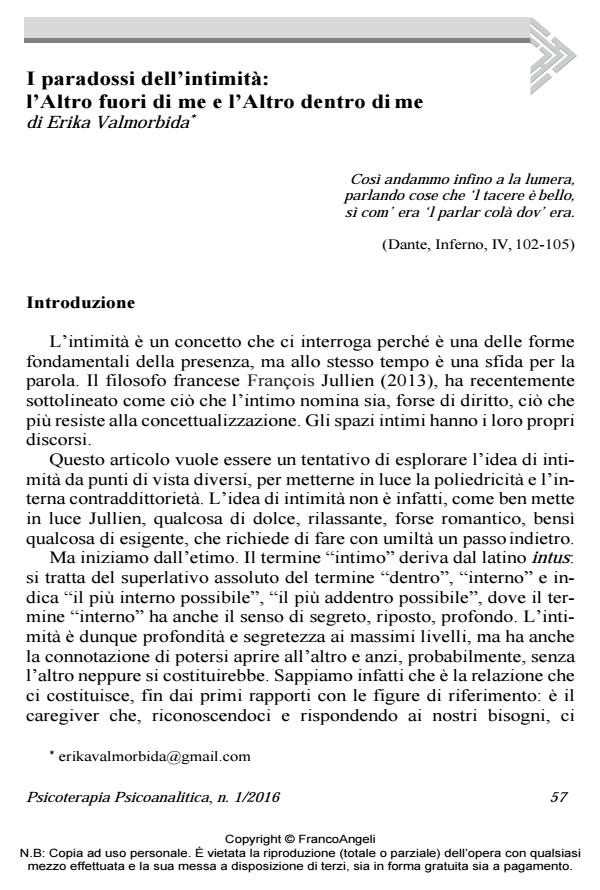The paradoxes of intimacy: the Other outside me and the Other inside me
Journal title PSICOTERAPIA PSICOANALITICA
Author/s Erika Valmorbida
Publishing Year 2016 Issue 2016/1
Language Italian Pages 12 P. 57-68 File size 185 KB
DOI 10.3280/PSP2016-001005
DOI is like a bar code for intellectual property: to have more infomation
click here
Below, you can see the article first page
If you want to buy this article in PDF format, you can do it, following the instructions to buy download credits

FrancoAngeli is member of Publishers International Linking Association, Inc (PILA), a not-for-profit association which run the CrossRef service enabling links to and from online scholarly content.
Intimacy is a paradoxical concept as well as difficult to conceptualize. It can refer to a relationship with the Other outside us, but also with the Other inside us. From the Socratic dáimōn, to the Platonic dianoia, through the Verbum interioris of Augustine, the Lutheran "inner voice", and the "I think, therefore I am" of Descartes to the Romanticism and Idealism, and moving to the twentieth-century’s individualistic concept of intimacy, this expression of the human being has constantly changed. In contemporary society we can see an externalization of the intimacy, which no longer has its necessary concealment.
Keywords: Intimacy, identity, externalization, Other
Erika Valmorbida, I paradossi dell’intimità: l’Altro fuori di me e l’Altro dentro di me in "PSICOTERAPIA PSICOANALITICA" 1/2016, pp 57-68, DOI: 10.3280/PSP2016-001005